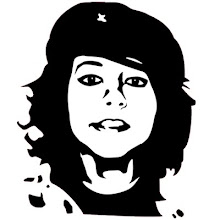Wikipedia has a surprising amount of documentation on the topic
http://en.wikipedia.org/wiki/Film_noir

The most important point is that, relatively speaking film noir is not a genre. It is more so the mood in which the film or clip is portrayed through use of camera and visual tone. “Film noirs tended to use low-key lighting schemes producing stark light/dark contrasts and dramatic shadow patterning.”
The dark tones of colour used are not the only thing that draws me to this visual style, but more significantly my interest is focused upon the masterful camera work. Traditionally the use of Dutch angles, low-angle shots, and wide-angle lenses or widely used.
Dutch Angle

A Dutch angle is achieved by tilting the camera off to the side so that the shot is composed with the horizon at an angle to the bottom of the frame
Low Angle

A low-angle shot is a shot from a camera positioned low on the vertical axis, often at knee height looking up.
Wide Angle

A wide angle shot will have a tendency to exaggerate perspective.
Another characteristic are that “devices of disorientation relatively common in film noir include shots of people reflected in one or more mirrors, shots through curved or frosted glass or other distorting objects”
Mirror effect

Shadows

I hope this sort of work can help influence my own, the use of shadow and light are very important in my work and this seems an appropriate parallel. Adding mood, tension and sometimes fear to the scenes will prove challenging and feel that looking at these sort of delivery methods if can achieve the best results along with a unique style.

No comments:
Post a Comment